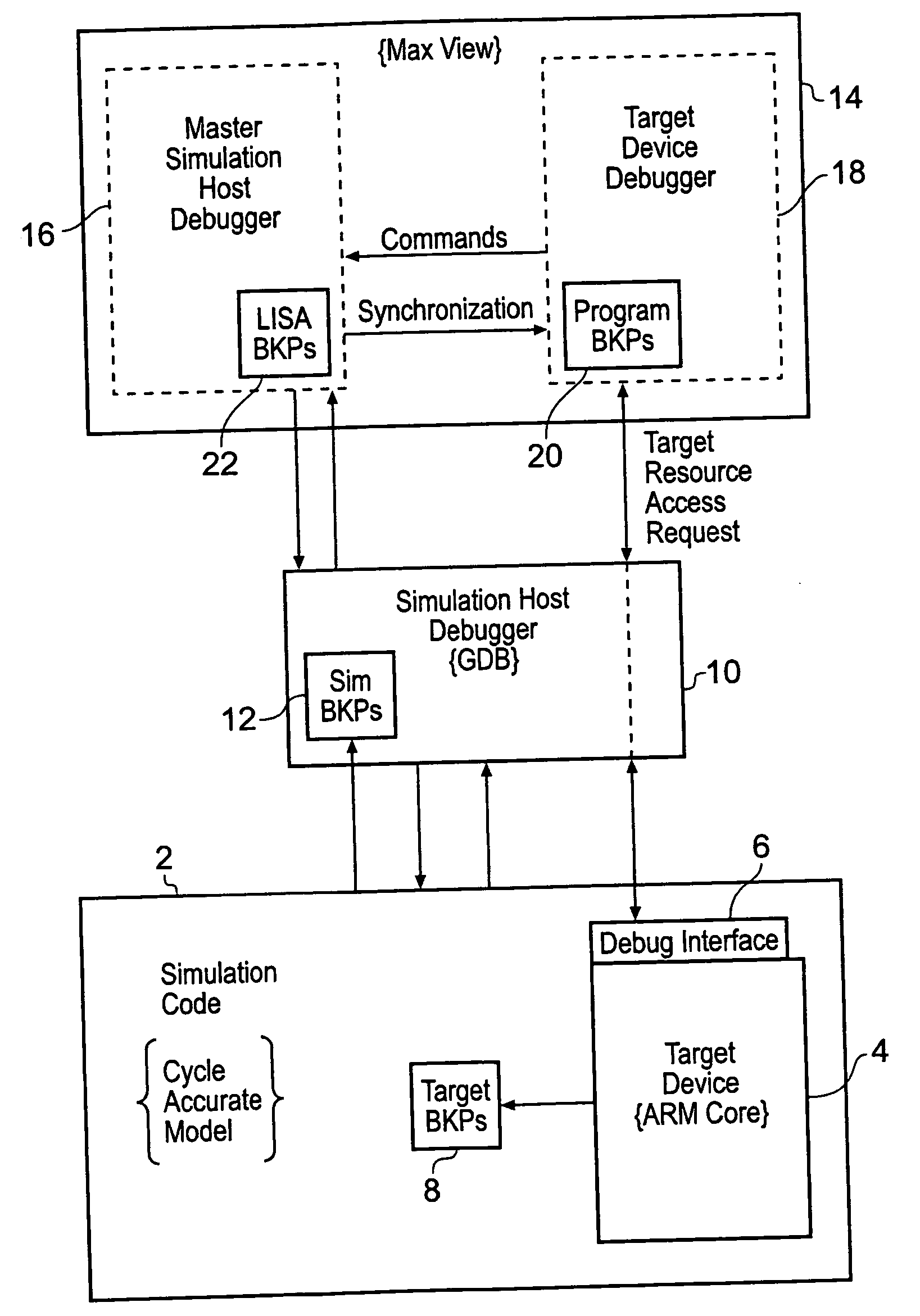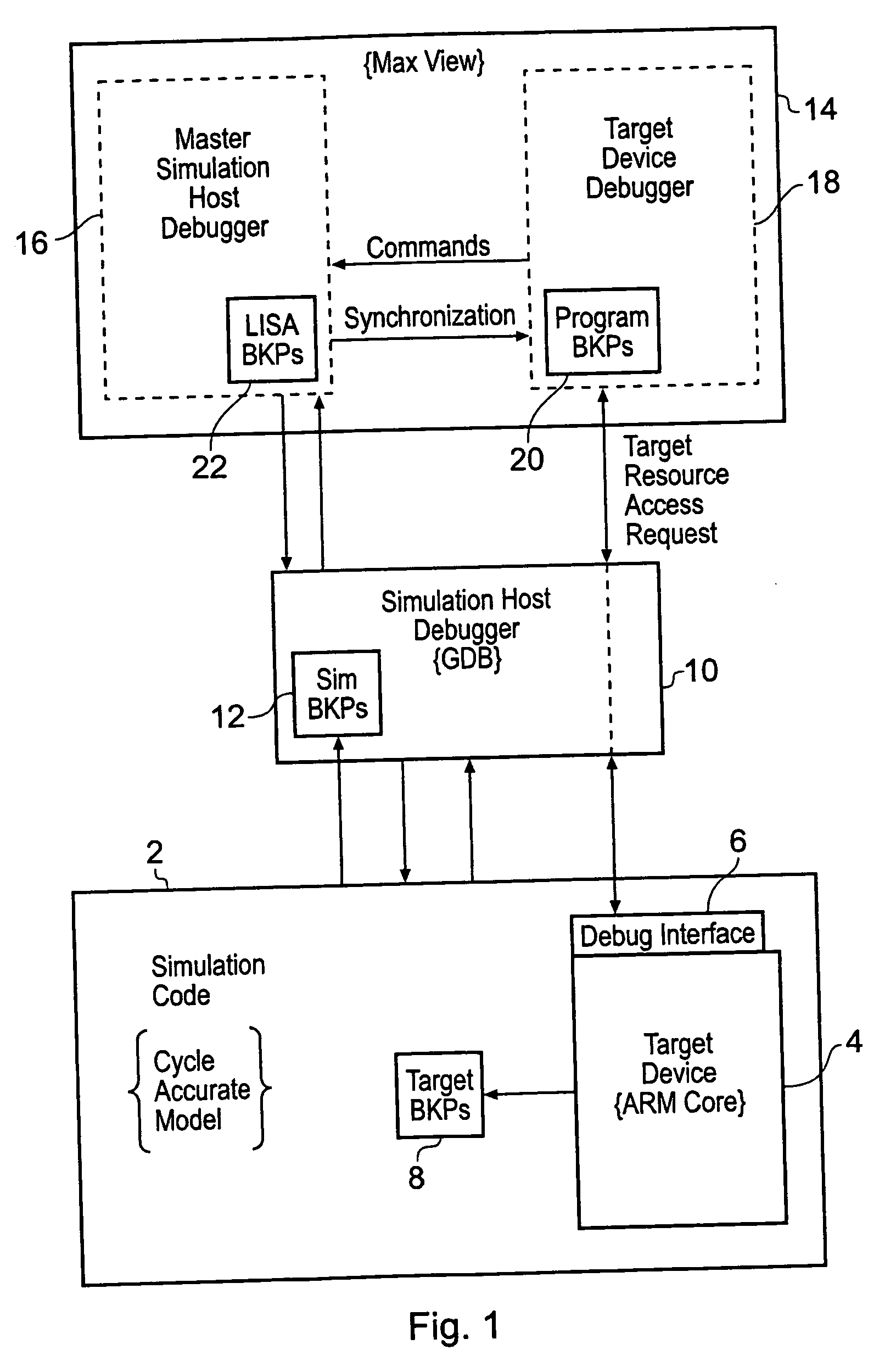Modelling of programmable devices
- Summary
- Abstract
- Description
- Claims
- Application Information
AI Technical Summary
Benefits of technology
Problems solved by technology
Method used
Image
Examples
Embodiment Construction
[0035]FIG. 1 schematically illustrates a simulation system for simulating a target programmable device executing target program code. Simulation code 2 is developed to provide a cycle accurate model of the target device, such as a microprocessor core. The simulation code 2 can be considered to provide a virtual machine upon which target program code for the target programmable device may be executed. Execution of this target program code upon the simulated target programmable device is advantageous to both test the target programmable device and to test the target program code. In operation, the simulation code 2 is provided with data defining the contents of the program memory (and possibly data to be manipulated) for execution by the target programmable device. The target programmable device is schematically illustrated as element 4 within FIG. 1, although it will be appreciated that the target device is in practice represented by lines of program code within the simulation code a...
PUM
 Login to View More
Login to View More Abstract
Description
Claims
Application Information
 Login to View More
Login to View More - R&D
- Intellectual Property
- Life Sciences
- Materials
- Tech Scout
- Unparalleled Data Quality
- Higher Quality Content
- 60% Fewer Hallucinations
Browse by: Latest US Patents, China's latest patents, Technical Efficacy Thesaurus, Application Domain, Technology Topic, Popular Technical Reports.
© 2025 PatSnap. All rights reserved.Legal|Privacy policy|Modern Slavery Act Transparency Statement|Sitemap|About US| Contact US: help@patsnap.com



